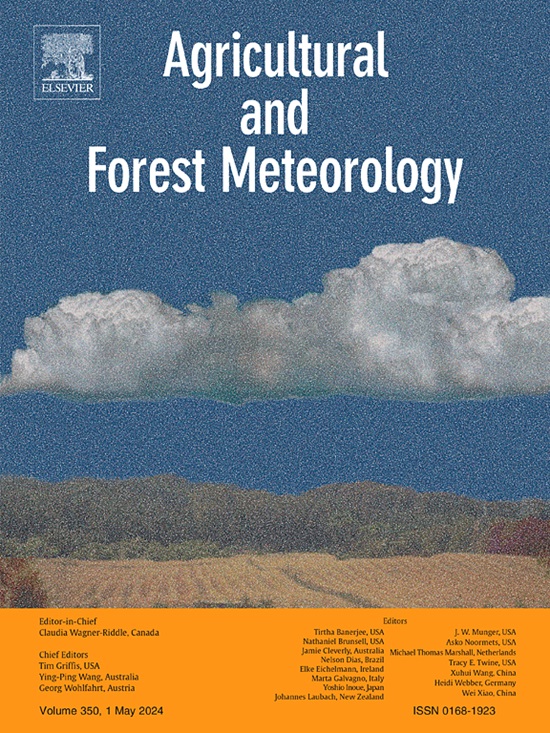Slow recovery of microclimate temperature buffering capacity after clear-cuts in boreal forests
IF 5.6
1区 农林科学
Q1 AGRONOMY
引用次数: 0
Abstract
The majority of Fennoscandian boreal forests are managed. Forest management inherently changes the physical structure of forests, thus altering ecosystem functions and the conditions for living organisms within these environments. However, the impacts of management on the microclimate buffering of boreal forests have not been comprehensively studied, despite that microclimate is one of the key determinants of biodiversity. Here, we studied the effect of forest structure and management on the temperature buffering capacity of boreal forests using terrestrial laser scanning and microclimate measurements. We measured the temperature variability on forest plots representing two management types: even-aged rotation forestry and uneven-aged forestry. To quantify buffering, we calculated the slope coefficient of the linear regression between microclimate and clear-cut temperatures. We found that the total amount of plant material alone was not an adequate predictor of the buffering. Instead, increasing canopy layers and the density of the understory led to more buffered temperature variability compared to clear-cuts and forests with fewer layers. The buffering was high in both mature even-aged and uneven-aged sites, but the effect in even-aged forests depended on stand age, suggesting that a strong buffering capacity could be reached only after approximately 30 years after clear-cut. In uneven-aged stands, the buffering capacity varied with recurring partial selection cuttings, but never lead to a full coupling with open-air temperatures like in even-aged stands after clear-cuts. We conclude that despite the buffering being on average stronger in mature even-aged stands than in uneven-aged stands, it can take decades for a clear-cut stand to reach the same buffering capacity as an uneven-aged forest with continuous tree cover, and it will eventually disappear after a new clear-cut harvest. From biodiversity perspective, uneven-aged management can create more temporally stable microclimatic conditions and can thus aid in maintaining microrefugia and mitigate climate warming impacts.
求助全文
约1分钟内获得全文
求助全文
来源期刊
CiteScore
10.30
自引率
9.70%
发文量
415
审稿时长
69 days
期刊介绍:
Agricultural and Forest Meteorology is an international journal for the publication of original articles and reviews on the inter-relationship between meteorology, agriculture, forestry, and natural ecosystems. Emphasis is on basic and applied scientific research relevant to practical problems in the field of plant and soil sciences, ecology and biogeochemistry as affected by weather as well as climate variability and change. Theoretical models should be tested against experimental data. Articles must appeal to an international audience. Special issues devoted to single topics are also published.
Typical topics include canopy micrometeorology (e.g. canopy radiation transfer, turbulence near the ground, evapotranspiration, energy balance, fluxes of trace gases), micrometeorological instrumentation (e.g., sensors for trace gases, flux measurement instruments, radiation measurement techniques), aerobiology (e.g. the dispersion of pollen, spores, insects and pesticides), biometeorology (e.g. the effect of weather and climate on plant distribution, crop yield, water-use efficiency, and plant phenology), forest-fire/weather interactions, and feedbacks from vegetation to weather and the climate system.

 求助内容:
求助内容: 应助结果提醒方式:
应助结果提醒方式:


